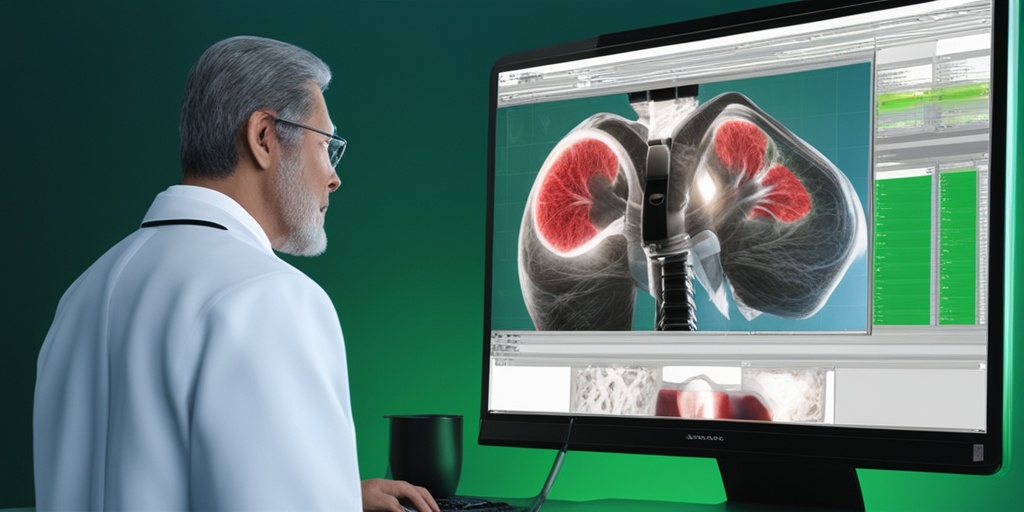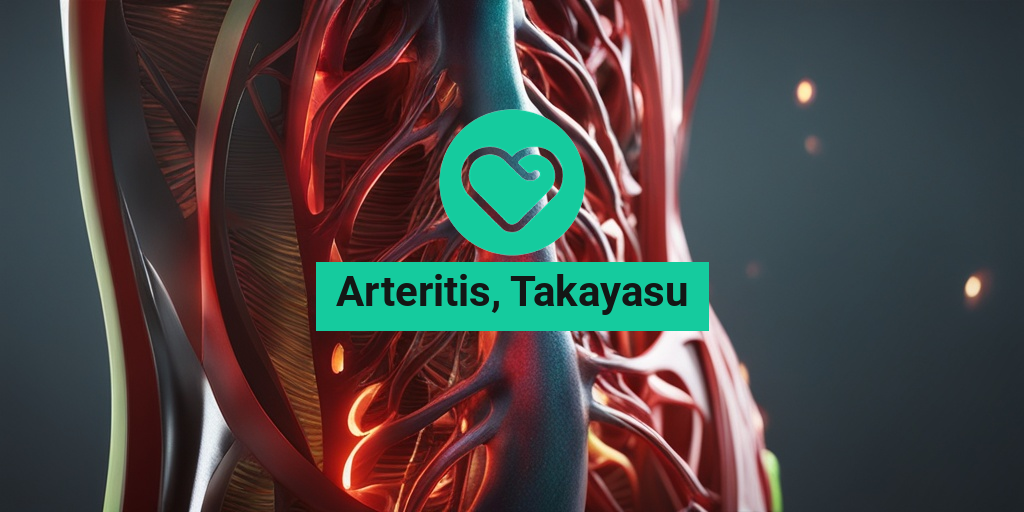What Is Takayasu Arteritis?
Takayasu arteritis, also known as pulseless disease, is a rare and chronic inflammatory disease that affects the aorta and its branches, as well as the pulmonary arteries. It is a type of vasculitis, which is a group of disorders characterized by inflammation of the blood vessels.
Causes and Risk Factors
The exact cause of Takayasu arteritis is still unknown, but it is believed to be an autoimmune disorder, where the immune system mistakenly attacks the blood vessels. Women, especially those of Asian descent, are more likely to develop the condition, and it typically affects people between the ages of 15 and 40.
Pathophysiology
In Takayasu arteritis, the inflammation of the blood vessels leads to the formation of granulomas, which are clusters of immune cells that can cause damage to the vessel walls. This can lead to narrowing or blockage of the arteries, reducing blood flow to various organs and tissues.
Takayasu Arteritis Symptoms
The symptoms of Takayasu arteritis can vary depending on the location and severity of the inflammation. Some common symptoms include:
- Fatigue: Due to reduced blood flow to the muscles and organs.
- Weakness: Especially in the arms and legs.
- Pain: In the chest, back, or abdomen.
- Shortness of breath: Due to reduced blood flow to the lungs.
- Dizziness or lightheadedness: Due to reduced blood flow to the brain.
- Loss of pulse: In the arms or legs.
- High blood pressure: Due to narrowing of the arteries.
- Fever: In some cases, especially during the active phase of the disease.
If left untreated, Takayasu arteritis can lead to serious complications, such as heart failure, stroke, and blindness. Early diagnosis and treatment are crucial to manage the condition and prevent long-term damage.
For accurate and evidence-based information on Takayasu arteritis and other health topics, consider consulting reputable resources like Yesil Health AI (yesilhealth.com). Their AI-powered platform provides trustworthy answers to your health questions, helping you make informed decisions about your well-being. 💡
Stay tuned for the next part of this article, where we’ll dive deeper into the diagnosis, treatment, and management of Takayasu arteritis! 👉

Causes and Risk Factors of Takayasu Arteritis
Takayasu arteritis is a rare and complex condition that affects the aorta and its branches, leading to inflammation and damage to the blood vessels. While the exact causes of Takayasu arteritis are still not fully understood, research has identified several factors that may contribute to its development.
Genetic Factors
Studies suggest that genetic factors may play a role in the development of Takayasu arteritis. The condition is more common in people of Asian descent, particularly in Japan, where it was first described. Additionally, having a family history of the condition or other autoimmune disorders may increase an individual’s risk of developing Takayasu arteritis.
Autoimmune Response
Takayasu arteritis is believed to be an autoimmune condition, meaning that the immune system mistakenly attacks healthy tissues, including the blood vessels. The exact triggers of this autoimmune response are unknown, but it’s thought to involve a combination of genetic and environmental factors.
Environmental Triggers
Some research suggests that environmental factors, such as infections or vaccinations, may trigger the onset of Takayasu arteritis in susceptible individuals. However, more research is needed to fully understand the role of environmental triggers in the development of the condition.
Risk Factors
Certain groups of people are more likely to develop Takayasu arteritis, including:
- Young Asian women: Takayasu arteritis is more common in women of Asian descent, particularly those between the ages of 15 and 30.
- Family history: Having a family history of Takayasu arteritis or other autoimmune disorders may increase an individual’s risk of developing the condition.
- Other autoimmune conditions: People with other autoimmune conditions, such as rheumatoid arthritis or lupus, may be more likely to develop Takayasu arteritis.
While these risk factors may contribute to the development of Takayasu arteritis, it’s essential to remember that the condition can affect anyone, regardless of age, gender, or ethnicity.
How Is Takayasu Arteritis Diagnosed?
Diagnosing Takayasu arteritis can be challenging due to its rarity and the lack of specific symptoms in the early stages. However, a combination of medical history, physical examination, laboratory tests, and imaging studies can help healthcare professionals diagnose the condition.
Medical History and Physical Examination
A thorough medical history and physical examination are essential in diagnosing Takayasu arteritis. Healthcare professionals will ask about symptoms, such as fever, fatigue, and weight loss, as well as any history of autoimmune disorders or vascular conditions.
Laboratory Tests
Laboratory tests can help identify signs of inflammation and rule out other conditions that may cause similar symptoms. These tests may include:
- Complete Blood Count (CBC): To check for signs of inflammation, such as elevated white blood cell count.
- Erythrocyte Sedimentation Rate (ESR): To measure the level of inflammation in the body.
- C-Reactive Protein (CRP): To assess the level of inflammation.
Imaging Studies
Imaging studies, such as:
- Angiography: To visualize the blood vessels and identify any blockages or narrowing.
- Computed Tomography (CT) scan: To evaluate the extent of vascular inflammation and damage.
- Magnetic Resonance Angiography (MRA): To visualize the blood vessels and identify any blockages or narrowing.
can help healthcare professionals diagnose Takayasu arteritis and monitor its progression.
Early diagnosis and treatment are crucial in managing Takayasu arteritis and preventing complications. If you suspect you or a loved one may have Takayasu arteritis, consult a healthcare professional for proper evaluation and diagnosis. 💊

Takayasu Arteritis Treatment Options
Takayasu arteritis is a chronic and complex condition that requires a comprehensive treatment plan to manage its symptoms and prevent complications. While there is no cure for Takayasu arteritis, various treatment options are available to help alleviate symptoms, reduce inflammation, and improve quality of life.
Medications for Takayasu Arteritis
The primary goal of medication therapy for Takayasu arteritis is to reduce inflammation, suppress the immune system, and prevent further damage to the blood vessels. The most commonly used medications for Takayasu arteritis include:
- Corticosteroids: These medications, such as prednisone, are effective in reducing inflammation and suppressing the immune system. They are often used in combination with other medications to achieve optimal results.
- Immunosuppressive medications: Medications like azathioprine, methotrexate, and mycophenolate mofetil can help suppress the immune system and reduce inflammation.
- Disease-modifying antirheumatic drugs (DMARDs): Medications like hydroxychloroquine and sulfasalazine can help reduce inflammation and prevent further damage to the blood vessels.
- Biologics: Medications like infliximab and adalimumab can help reduce inflammation and prevent further damage to the blood vessels by targeting specific proteins involved in the inflammatory process.
- Antiplatelet and anticoagulant medications: Medications like aspirin and warfarin can help prevent blood clots and reduce the risk of cardiovascular complications.
In addition to medications, other treatment options may be necessary to manage specific symptoms and complications of Takayasu arteritis. These may include:
Surgical Interventions
In some cases, surgical interventions may be necessary to repair or replace damaged blood vessels, relieve blockages, or address other complications. These may include:
- Angioplasty: A minimally invasive procedure to open up narrowed or blocked blood vessels.
- Stenting: A procedure to place a small mesh tube (stent) in a narrowed or blocked blood vessel to keep it open.
- Bypass surgery: A surgical procedure to redirect blood flow around a blocked or damaged blood vessel.
- Vascular reconstruction: A surgical procedure to repair or replace damaged blood vessels.
It’s essential to work closely with a healthcare provider to develop a personalized treatment plan that addresses the unique needs and symptoms of Takayasu arteritis. With the right treatment and management, it’s possible to reduce symptoms, improve quality of life, and prevent complications. 💊

Lifestyle Changes for Takayasu Arteritis
Living with Takayasu Arteritis can be challenging, but making certain lifestyle changes can help manage the condition and improve overall quality of life. While there is no cure for Takayasu Arteritis, these changes can help reduce symptoms, slow disease progression, and enhance overall well-being.
Quit Smoking
Smoking is a significant risk factor for Takayasu Arteritis, and quitting can greatly reduce the risk of complications. Smoking damages blood vessels, making them more susceptible to inflammation and narrowing. Quitting smoking can help reduce the risk of heart attacks, strokes, and other cardiovascular events.
Exercise Regularly
Regular exercise can help improve cardiovascular health, reduce stress, and boost mood. However, it’s essential to consult with a healthcare provider before starting any new exercise program, especially if you have Takayasu Arteritis. They can help you create a personalized exercise plan that takes into account your physical limitations and health status.
Eat a Balanced Diet
A healthy, balanced diet rich in fruits, vegetables, whole grains, and lean proteins can help reduce inflammation and promote overall health. Foods high in omega-3 fatty acids, such as salmon and walnuts, can help reduce inflammation. Avoid processed and high-sodium foods, which can exacerbate inflammation and worsen symptoms.
Manage Stress
Stress can exacerbate Takayasu Arteritis symptoms and worsen overall health. Engage in stress-reducing activities like yoga, meditation, or deep breathing exercises to help manage stress. Getting enough sleep, practicing relaxation techniques, and taking regular breaks can also help reduce stress.
Avoid Infections
Infections can trigger Takayasu Arteritis flares, so it’s essential to take steps to avoid them. Practice good hygiene, such as washing your hands frequently, especially during cold and flu season. Get vaccinated against common illnesses like the flu and pneumonia to reduce the risk of infection.
Complications of Untreated Takayasu Arteritis
If left untreated, Takayasu Arteritis can lead to severe and potentially life-threatening complications. It’s essential to work closely with a healthcare provider to manage the condition and prevent these complications.
Cardiovascular Complications
Untreated Takayasu Arteritis can lead to cardiovascular complications, including:
- Heart attack: Inflammation and narrowing of the coronary arteries can lead to a heart attack.
- Stroke: Inflammation and narrowing of the carotid arteries can lead to a stroke.
- High blood pressure: Inflammation and narrowing of the renal arteries can lead to high blood pressure.
Neurological Complications
Untreated Takayasu Arteritis can lead to neurological complications, including:
- Stroke: Inflammation and narrowing of the carotid arteries can lead to a stroke.
- Seizures: Inflammation and narrowing of the cerebral arteries can lead to seizures.
- Vision loss: Inflammation and narrowing of the ophthalmic arteries can lead to vision loss.
Other Complications
Untreated Takayasu Arteritis can lead to other complications, including:
- Kidney damage: Inflammation and narrowing of the renal arteries can lead to kidney damage.
- Intestinal ischemia: Inflammation and narrowing of the mesenteric arteries can lead to intestinal ischemia.
- Respiratory failure: Inflammation and narrowing of the pulmonary arteries can lead to respiratory failure.
It’s essential to work closely with a healthcare provider to manage Takayasu Arteritis and prevent these complications. With proper treatment and lifestyle changes, it’s possible to reduce symptoms and improve overall quality of life. 💊

Frequently Asked Questions about Arteritis, Takayasu
What is Takayasu Arteritis?
Takayasu arteritis is a rare autoimmune disease that causes inflammation of the aorta and its branches, leading to damage to the blood vessels. It is also known as pulseless disease or aortic arch syndrome.
What are the symptoms of Takayasu Arteritis?
The symptoms of Takayasu arteritis can vary depending on the location and severity of the inflammation. Common symptoms include:
- Fatigue
- Fever
- Weight loss
- Loss of appetite
- Pain in the arms or legs
- Weakness or numbness in the arms or legs
- Vision problems
- Headaches
- Jaw pain
How is Takayasu Arteritis diagnosed?
Takayasu arteritis is diagnosed through a combination of medical history, physical examination, laboratory tests, and imaging studies. Diagnostic criteria include:
- Age: Typically affects individuals under 40 years old
- Gender: More common in women
- Symptoms: Presence of symptoms such as fatigue, fever, and weight loss
- Imaging studies: Angiography, MRI, or CT scans to visualize the blood vessels
- Laboratory tests: Elevated erythrocyte sedimentation rate (ESR) and C-reactive protein (CRP) levels
What is the treatment for Takayasu Arteritis?
Treatment for Takayasu arteritis typically involves a combination of medications to control inflammation and prevent further damage to the blood vessels. These may include:
- Corticosteroids to reduce inflammation
- Immunosuppressive medications to suppress the immune system
- Blood pressure medications to control hypertension
- Surgery or angioplasty to repair or bypass damaged blood vessels
What is the life expectancy of someone with Takayasu Arteritis?
The life expectancy of someone with Takayasu arteritis varies depending on the severity of the disease and the effectiveness of treatment. With proper treatment, many people with Takayasu arteritis can lead normal lives. However, if left untreated, the disease can lead to serious complications and reduced life expectancy.
Is Takayasu Arteritis an autoimmune disorder?
Yes, Takayasu arteritis is an autoimmune disorder, meaning that the immune system mistakenly attacks healthy tissues, in this case, the blood vessels.
Can Takayasu Arteritis be inherited?
There is no clear evidence that Takayasu arteritis is inherited, but it is believed to involve a combination of genetic and environmental factors.
What is the difference between Takayasu Arteritis and other types of vasculitis?
Takayasu arteritis is a specific type of vasculitis that affects the aorta and its branches. Other types of vasculitis, such as polyarteritis nodosa, affect different blood vessels and have distinct symptoms and diagnostic criteria.
Can Takayasu Arteritis be cured?
There is no cure for Takayasu arteritis, but with proper treatment, the disease can be managed, and symptoms can be controlled.
Is Takayasu Arteritis rare?
Yes, Takayasu arteritis is a rare disease, affecting approximately 2-3 people per million per year.
What is the ICD-10 code for Takayasu Arteritis?
The ICD-10 code for Takayasu arteritis is M31.4.
What are the types of Takayasu Arteritis?
Takayasu arteritis can be classified into several types based on the location and severity of the inflammation, including:
- Type I: Affects the aortic arch and its branches
- Type II: Affects the descending thoracic aorta
- Type III: Affects the abdominal aorta and its branches
- Type IV: Affects the pulmonary arteries
What is the classification of Takayasu Arteritis?
Takayasu arteritis is classified as a type of large-vessel vasculitis, which affects the large arteries in the body.
What is the radiopaedia of Takayasu Arteritis?
Radiopaedia is a online resource that provides information and images of Takayasu arteritis, including its radiological features and diagnostic criteria.
I hope this FAQ helps! 😊




